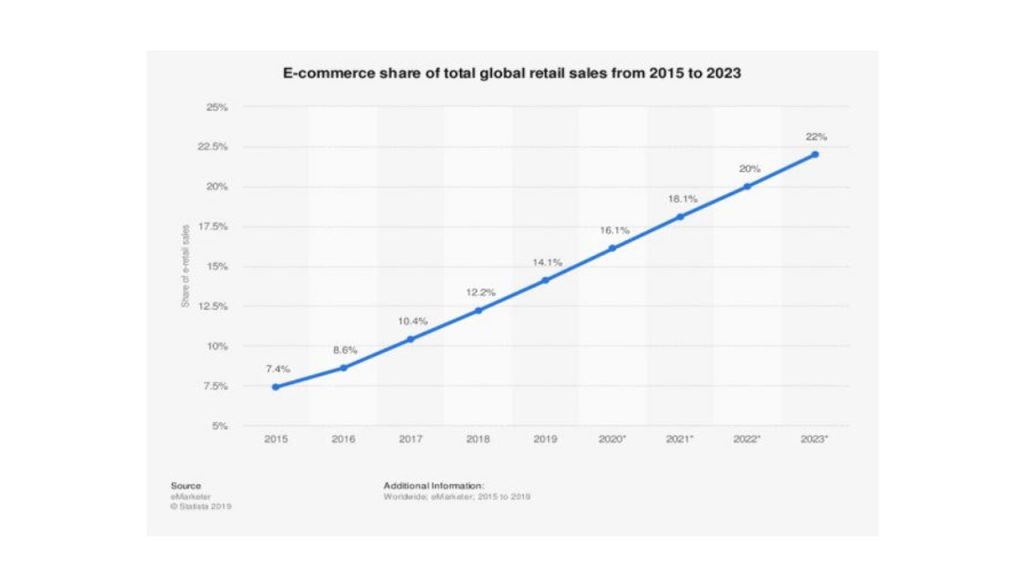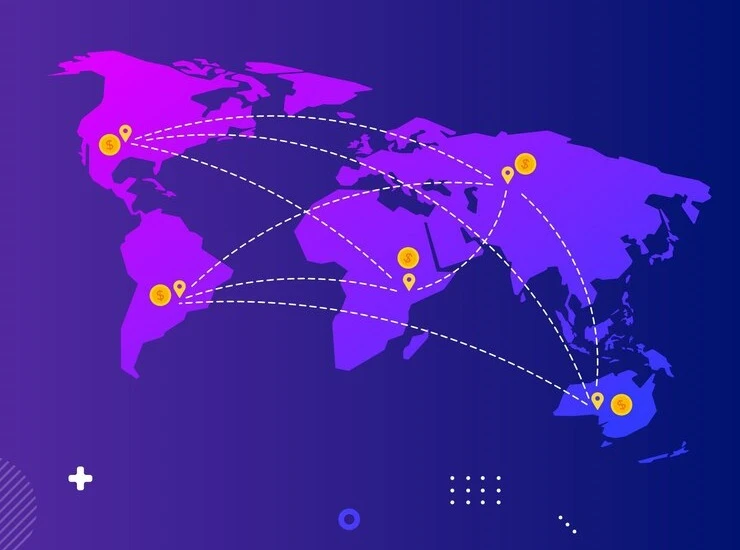Cross-Border Ecommerce: Adapting Your Business for Global Success
The Importance of Cross-Border Ecommerce and Adaptability in Today’s Dynamic World
In an ever-evolving global landscape, adaptability has become a crucial trait that everyone, from individuals to organizations, should cultivate. The ability to adjust and respond to shifts in the market, consumer behavior, technology, and external events has emerged as one of the most important determinants of success. For businesses, adaptability is no longer just an advantageous quality—it is a vital necessity that shapes their longevity and relevance. Companies that fail to adapt risk falling behind their competitors and losing touch with their customers, especially in the fast-paced world of eCommerce.
The concept of adaptability is particularly important in the context of cross-border eCommerce. As businesses increasingly operate in international markets, they must navigate different regulations, cultures, currencies, and consumer preferences. The ability to pivot in response to these complexities—whether it’s adjusting marketing strategies, logistics solutions, or customer service practices—is what sets successful companies apart. With cross-border eCommerce, companies are no longer just competing locally; they are competing on a global scale, where agility and responsiveness are essential to thriving.
One of the most striking examples of how quickly circumstances can change, and how adaptability becomes crucial, is the COVID-19 pandemic. This unprecedented global crisis has dramatically reshaped the world, affecting nearly every aspect of life—from public health to the global economy. The pandemic forced businesses to rethink their strategies, adopt new technologies, and adjust their operations in response to restrictions and changing consumer behaviors. For many businesses, this period marked a time of uncertainty, disruption, and financial hardship. However, for others, it was a turning point that demonstrated the power of adaptability.
The Rise of Cross-Border Ecommerce
Another remarkable transformation in today’s business landscape is the increasing globalization of commerce. Unlike in the past, when local barriers restricted businesses from reaching international markets, advancements in technology, improved international relations, and favorable trade agreements have made it easier for businesses to expand globally.
But why should businesses consider going international? There are compelling reasons. A report on global connected commerce revealed that as of 2019, approximately 57% of online shoppers had purchased products from a foreign country[4]. Furthermore, cross-border eCommerce was projected to reach a staggering $1 trillion by the end of 2020[5]. These statistics indicate a tremendous opportunity for businesses willing to venture into international markets.
Expanding into global markets may seem daunting at first, but cross-border eCommerce is here to stay. Businesses that quickly adapt to this trend will gain a competitive edge over those hesitating to take the leap.
If you want to learn how to successfully adapt your business for cross-border eCommerce, this guide will walk you through the essential steps to ensure success.
Understanding the Cross-Border eCommerce Market
Simply put, cross-border eCommerce refers to the act of selling goods, products, and services across international borders. This dynamic subset of the global eCommerce market has seen significant growth as businesses increasingly tap into the potential of international consumers. The global eCommerce landscape, which encompasses both local and international online sales, is experiencing an unprecedented surge, driven by factors such as digital transformation, globalization, and the increasing reliance on technology in everyday business operations.
Market research and statistical data consistently point to the enormous expansion of the eCommerce sector. By 2023, the global eCommerce market is projected to be valued at over $6.5 trillion, accounting for approximately 22% of all global retail sales. This growth trajectory reflects how eCommerce is becoming an integral part of the global economy, reshaping consumer behavior and the retail sector on a large scale. The increasing digitalization of commerce, which includes the proliferation of mobile devices, digital payment systems, and seamless online shopping experiences, has accelerated this growth.
The rise of cross-border eCommerce is not merely a consequence of technological advancements but also of consumer demand for greater variety, better prices, and the ability to shop internationally with ease. In particular, consumers from emerging markets are now more likely than ever to engage in online shopping, giving businesses from different regions the opportunity to expand their reach beyond traditional boundaries. As global infrastructure improves and shipping and logistics networks become more robust, businesses are better equipped to serve international markets efficiently and effectively.

The Role of Innovation in Driving Cross-Border eCommerce Success
Innovation is at the heart of successful cross-border eCommerce. As the global marketplace continues to evolve, businesses must stay ahead of the curve by adopting cutting-edge technologies and strategies that enhance their operations and customer experiences. In this context, innovation isn’t just about creating new products—it’s also about finding new ways to streamline processes, improve efficiency, and cater to an increasingly sophisticated and diverse customer base.
For businesses operating in international markets, innovation can take many forms. One of the most significant innovations in cross-border eCommerce is the development of localized online shopping experiences. Global consumers expect a personalized shopping journey tailored to their language, currency, and cultural preferences. Companies that embrace localization strategies—such as offering multilingual websites, local payment options, and region-specific marketing—are better positioned to build trust and loyalty with international customers. By innovating in this way, businesses can create a more engaging and relevant experience for shoppers in different regions, ultimately driving higher conversion rates and sales.
Another key area where innovation plays a critical role is in supply chain management. Cross-border eCommerce companies often face challenges related to shipping, customs, and inventory management. The ability to optimize supply chain operations through innovative technologies, such as blockchain, artificial intelligence, and automation, can significantly reduce operational costs and improve delivery times. Additionally, innovations in logistics—such as advanced tracking systems, predictive analytics, and drone deliveries—are revolutionizing the way businesses fulfill international orders, enabling them to meet consumer demands more effectively.
The use of data analytics is another powerful tool driving innovation in cross-border eCommerce. By leveraging consumer data, businesses can gain insights into purchasing behaviors, trends, and preferences across different markets. This information can be used to inform product development, optimize pricing strategies, and create targeted marketing campaigns. Furthermore, AI-driven tools can help businesses predict customer needs and offer personalized recommendations, enhancing the overall shopping experience and fostering greater customer satisfaction.
Why Are More Consumers Shopping Internationally?
Understanding the motivations behind cross-border shopping can help businesses tailor their strategies effectively. A survey of U.S. consumers revealed the following key reasons for shopping internationally:
- 49% sought lower prices compared to their domestic market.
- 43% wanted access to brands that were unavailable in their home country.
- 35% were looking for unique and exclusive products not readily available locally.
By understanding these driving factors, businesses can maximize their cross-border sales by strategically positioning their offerings to attract international customers.
Beyond these core motivations, other factors such as superior product quality, better customer service, and favorable exchange rates also contribute to the increasing preference for cross-border purchases. Furthermore, with the growth of digital marketing and localized online experiences, international retailers can build trust and engagement with foreign consumers through region-specific advertising, language adaptation, and culturally relevant branding.
By understanding these driving factors, businesses can maximize their cross-border sales by strategically positioning their offerings to attract international customers. Investing in localized marketing efforts, optimizing website translations, and offering multiple payment options tailored to regional preferences will enhance customer experiences and boost conversion rates. Moreover, leveraging data analytics to track consumer behavior and preferences across different markets can provide valuable insights for refining international sales strategies and expanding global reach effectively.
Key Benefits of Cross-Border eCommerce
Expanding into international markets presents businesses with a wealth of opportunities, allowing them to grow beyond domestic limitations and reach new audiences. Here are some of the key advantages:
- Increased Revenue Streams:
Selling products or services globally enables businesses to diversify their income sources, reducing dependency on a single market. By catering to international customers, companies can generate consistent revenue year-round, even during seasonal slowdowns in their home country. Additionally, access to different economic cycles and consumer spending behaviors can help stabilize overall business performance.
- Competitive Advantage:
Early entry into new markets provides businesses with the opportunity to establish a strong brand presence before competitors. This allows them to secure customer loyalty, optimize supply chains, and build strategic partnerships. By adapting products and marketing strategies to different cultural preferences, companies can position themselves as industry leaders in multiple regions.
- Market Expansion Opportunities:
Cross-border eCommerce opens doors to high-growth regions and emerging markets with increasing demand for specific products or services. By identifying underserved markets, businesses can capitalize on consumer needs that may not be fully addressed by local competitors. Additionally, strategic localization—such as offering region-specific payment options and language support—enhances the customer experience and increases conversion rates.
- Stronger Brand Recognition:
A well-established international presence can significantly boost a brand’s reputation and credibility. Expanding globally signals trustworthiness and success, which can attract more customers, business partners, and investors. Leveraging social media, influencer collaborations, and multilingual content marketing helps create a unified brand identity that resonates with diverse audiences.
By leveraging cross-border eCommerce, businesses can unlock significant growth potential, enhance resilience against market fluctuations, and build a globally recognized brand. With the right strategies in place—such as localized marketing, efficient logistics, and compliance with international regulations—companies can thrive in the competitive global marketplace.
Challenges of Cross-Border eCommerce and How to Overcome Them
Expanding into international markets presents significant opportunities, but it also comes with unique challenges that businesses must address to succeed. Here are some common obstacles and strategies to overcome them:
Logistics and Shipping Costs:
International shipping is often expensive and complicated due to factors such as customs duties, varying shipping regulations, and longer delivery times. Inefficient logistics can lead to delays, increased costs, and a poor customer experience.
How to Overcome It:
- Partner with reliable global shipping carriers to negotiate competitive rates.
- Utilize fulfillment centers and warehouses in key regions to reduce shipping times and costs.
- Offer multiple shipping options, including express and economy choices, to cater to different customer preferences.
- Clearly communicate estimated delivery times and potential fees upfront to manage customer expectations.
Regulatory and Compliance Issues:
Every country has different tax laws, import/export regulations, and product compliance requirements. Failing to adhere to these regulations can lead to penalties, shipment delays, or even bans from certain markets.
How to Overcome It:
- Consult legal experts who specialize in international trade laws to ensure compliance.
- Use automated tax and duty calculation tools to apply the correct fees at checkout.
- Stay updated on changing regulations and adapt business operations accordingly.
- Implement a transparent return and refund policy that aligns with local consumer protection laws.
Payment Security and Fraud Prevention:
Cross-border transactions are more susceptible to fraud, chargebacks, and security threats, which can lead to financial losses and damage customer trust. Additionally, customers may have concerns about using unfamiliar payment methods.
How to Overcome It:
- Integrate secure and globally recognized payment gateways such as PayPal, Stripe, or local payment solutions.
- Implement SSL encryption and PCI DSS compliance to protect sensitive financial data.
- Use fraud detection tools to identify suspicious transactions and minimize risks.
- Offer a range of payment methods, including digital wallets and local banking options, to enhance trust and convenience.
Localization and Customer Support:
A one-size-fits-all approach does not work in international eCommerce. Customers prefer shopping experiences tailored to their language, culture, and currency. Poor localization can lead to lost sales and a lack of brand credibility.
How to Overcome It:
- Translate product descriptions, checkout processes, and customer communications into the local language.
- Display prices in the local currency and ensure that taxes and shipping fees are calculated accurately.
- Provide multilingual customer support through chat, email, or phone to assist international shoppers.
- Adapt marketing campaigns to cultural preferences, holidays, and trends in each region.
Ensuring Your eCommerce Store is Ready for International Sales
To successfully transition into the global marketplace, businesses must take specific steps to prepare their eCommerce stores for international transactions. Below are key steps to ensure your business is ready for transnational deals:
Step 1: Handling Transactions and Payments
One of the biggest challenges of selling internationally is ensuring seamless transactions. Here’s how to prepare:
- Multiple Payment Options: Different countries prefer different payment methods. For example, Chinese consumers favor Alipay and WeChat Pay, while Dutch consumers commonly use iDeal, and French shoppers prefer credit and debit cards. Offering diverse payment methods enhances customer convenience and increases conversion rates.

- Currency Conversion: International shoppers use various currencies. Integrating a currency converter into your eCommerce platform allows customers to see product prices in their local currency, making purchasing decisions easier.
- Tax Considerations: Taxes and import duties are unavoidable when selling internationally. Consulting legal and tax professionals will help you develop a strategy that complies with different countries’ regulations. Additionally, integrating a tax calculator on your website ensures customers are aware of their total costs before checkout.
- Secure Payments: Online transactions must be secure to protect customer data. Implementing SSL certificates and robust security measures will help safeguard sensitive information and build trust with international customers.
Step 2: Managing Logistics and Shipping
Shipping is a critical component of cross-border eCommerce. Consider the following:
- Choosing Shipping Methods: Depending on your target market, you can ship products via land, air, or sea. Partnering with reliable logistics providers such as UPS and DHL ensures timely delivery.

- Dropshipping vs. Inventory Management: Businesses can opt for dropshipping, where third-party suppliers handle storage and shipping, or maintain their own inventory, which provides greater control over stock and fulfillment.
- Hybrid Approach: Some businesses successfully combine both models—maintaining stock for high-demand products while using dropshipping for other items.
Step 3: Localization – The Key to Cross-Border Success
Localization plays a crucial role in successfully selling internationally. It involves adapting products, content, and marketing strategies to meet the cultural and linguistic expectations of specific regions.
- Language Translation: Your website and product descriptions should be available in the dominant languages of your target markets. This enhances customer engagement and trust. Tools like ConveyThis make it easy to translate and localize content without the need for coding expertise.
- Cultural Sensitivity: Beyond language, businesses must consider cultural nuances. Holidays, traditions, and buying behaviors vary by region. Adapting marketing campaigns and product offerings accordingly will increase customer relevance and acceptance.
Ensuring a Seamless Customer Experience Across Borders
A smooth customer experience is essential to building loyalty and trust in international markets. By anticipating customer needs and providing a seamless shopping journey, businesses can encourage repeat purchases and positive word-of-mouth.
How to Ensure It:
- User-Friendly Website: Ensure your website is easy to navigate, with clear product descriptions, easy checkout, and multiple payment options. Design your site to load quickly across different regions to avoid cart abandonment.
- Customer Support: Offering multilingual support options, whether through live chat, email, or phone, ensures that customers from different regions feel heard and supported.
- Clear Shipping Information: Provide accurate shipping times and costs, including any customs duties or import taxes that may apply to international orders, to avoid unexpected charges and delays.
Building Trust with International Customers
Trust is the foundation of successful cross-border eCommerce. Without trust, international customers may hesitate to complete their purchases. To build and maintain customer trust, businesses must be transparent, reliable, and communicative.
How to Build Trust:
- Clear Return and Refund Policies: Customers should feel secure in their purchase decisions, knowing they can easily return items if necessary. Make sure your policies are straightforward and comply with local consumer protection laws.
- Customer Reviews and Testimonials: Displaying customer feedback from buyers in your target markets helps new customers feel more confident about their purchases.
- Secure Transactions: Employ robust security measures such as SSL encryption and trusted payment gateways to protect customers’ sensitive data and build trust in your brand.
Navigating International Marketing and SEO
For cross-border eCommerce to be successful, businesses need to ensure that their marketing and SEO strategies are aligned with international consumer behaviors and preferences. Effective international marketing can drive traffic, increase conversions, and establish a strong brand presence globally.
How to Navigate It:
- Localized SEO: Tailor your SEO efforts to local search engines by using region-specific keywords and optimizing content for each market’s language, culture, and search behavior. This increases your visibility and ensures your products are found by international customers.
- Social Media and Influencer Marketing: Engage with international audiences on platforms like Instagram, Facebook, and TikTok, and collaborate with local influencers to increase brand awareness.
- Cultural Relevance: Create marketing content that resonates with local customs, trends, and values, making sure your brand feels authentic and relatable in each region.
Conclusion:
Cross-border eCommerce presents a transformative opportunity for businesses seeking to expand their reach, diversify revenue streams, and establish a global presence. With consumers increasingly shopping beyond their national borders, companies that embrace international markets can unlock substantial growth potential. However, successfully navigating cross-border eCommerce requires careful planning and execution in key areas such as payment processing, logistics, regulatory compliance, and cultural adaptation.
A seamless and localized customer experience is crucial for gaining trust and driving conversions in international markets. From translating product descriptions and customer support materials to offering region-specific payment options and optimizing for local search engines, businesses must prioritize localization to ensure a frictionless shopping experience.
If you are ready to take your business global, implementing a robust localization strategy is essential. ConveyThis provides an all-in-one solution to seamlessly translate and adapt your content for diverse audiences, ensuring that your brand resonates with customers worldwide. With automated translation, multilingual SEO optimization, and effortless integration across platforms, ConveyThis makes it easier than ever to break language barriers and expand into new markets.
Don’t let language and cultural differences limit your growth potential. Start today with ConveyThis and elevate your business to new heights in the world of cross-border eCommerce.
Additional Resources:
- ConveyThis Integrations – To explore compatibility with WordPress.
- How to Translate WordPress – For more guidance.
- Help Guide for Translating WordPress Websites – For step-by-step support.
- NIQ Article – To learn more about the global connected commerce.
- Alizila Post – For statistics about ecommerce growth though the years.
Translation, far more than just knowing languages, is a complex process.
By following our tips and using ConveyThis , your translated pages will resonate with your audience, feeling native to the target language.
While it demands effort, the result is rewarding. If you’re translating a website, ConveyThis can save you hours with automated machine translation.
Try ConveyThis free for 7 days!




